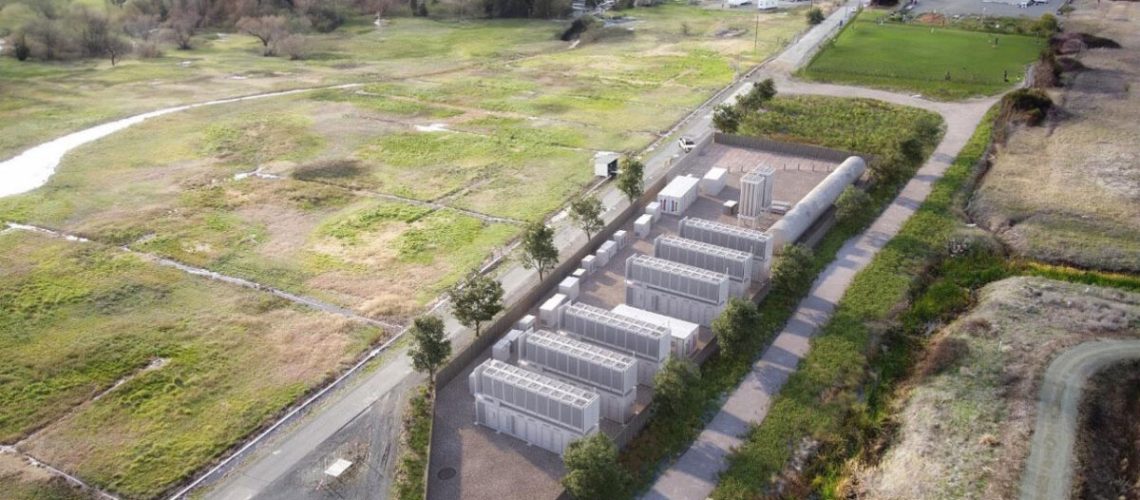The 293 MWh green hydrogen and battery storage facility is being built in utility Pacific Gas & Electric’s service territory in Northern California.
Utility-scale energy storage company Energy Vault has begun constructing what will be the largest green hydrogen long-duration energy storage project in the U.S., located in Northern California.
The green hydrogen and battery storage facility, which will be able to provide 293 MWh of energy, is being built in the city of Calistoga, in utility Pacific Gas & Electric’s service territory. Calistoga is especially prone to public safety power shut-offs – that is, proactive outages that the utility deploys when weather conditions increase the risk of wildfires caused by its power lines. PG&E’s infrastructure has been linked with multiple wildfires in Northern California and in 2019, the company filed for Chapter 11 bankruptcy as a result of these liabilities.
The Calistoga Resiliency Center, as the project is called, is expected to be completed by the end of Q2 2024, at which point it will be “the first-of-its-kind and the largest utility-scale green hydrogen energy storage project in the United States,” according to Energy Vault. The facility will essentially replace the diesel generators that PG&E currently uses to maintain back-up power in the region during wildfire-related outages. It will be able to power downtown Calistoga and the areas immediately around it, including critical facilities like fire and police stations, for up to 48 hours.
Since this project is a first-of-its kind, it required specific design and engineering capabilities, according to Marco Terruzzin, the company’s chief product officer.
The new facility’s “innovative design is an example of two proven technologies – hydrogen fuel cells and batteries – being used in concert on a single site to provide high-quality emission-free power,” Terruzzin told pv magazine USA.
The facility will operate independently from the wider grid, meaning the fuel cells and batteries must work together to provide a ‘grid-forming’ electricity supply which must reach instantaneously to the demands of the Calistoga microgrid and increase or decrease power output accordingly, he added.
“Deploying cost-effective, next-generation energy supply and long-term storage technologies is essential to ensuring grid reliability and to achieving PG&E’s goal of a net zero energy system by 2040,” Mike Delaney, PG&E’s vice president of utility partnerships and innovation, said.
Under the companies’ 10.5-year agreement, Energy Vault will own and operate the center, providing PG&E with dispatchable power. The company plans to use its energy management system, dubbed VaultOS™, to optimize the project’s operations.
The California market is particularly appealing to Energy Vault when it comes to ultra-long duration energy storage solutions because of the increased risk of prolonged wildfire-related shutoffs, Terruzzin said.
More broadly, the company is seeing an increased interest in the use of green hydrogen in utility-scale microgrids from utilities looking for configurations similar to the one being constructed in Calistoga, as well as from the public and private sectors interested in multi-day resiliency solutions, he added.
“We expect that interest to increase as customers shift their focus from simple [power purchase agreements] to 24/7 PPAs that match their electric power hour-by-hour with the electricity being generated in the region in which the customer’s electric load is located,” he said.



